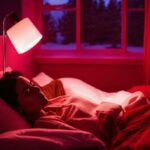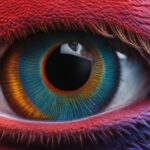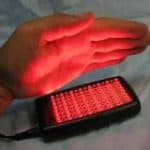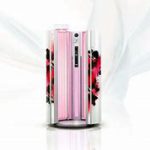Last Updated on 3 years by Francis
Does light box therapy work?

People, all around the globe suffer from numerous sleep disorders, such as circadian rhythm disorders.
These sleep disorders come with symptoms which can impact the day to day lifestyle and functioning of an individual, adversely.
Insomnia, irregular sleep and the desire to sleep during the day are some symptoms which people really want to avoid as they interfere in the daily life.
The light box therapy which is also known as phototherapy helps people to bring their sleep cycle back to normal and also helps them to slowly toss out depression that they may feel during the cold and cloudy seasons.
To help treat these disorders, the light box therapy comes in. To find out whether it really works or not, first we need to find out and understand that what it really is.
What is light box therapy?

A light box is an equipment which is fixed in a position, it emits light for light exposure, this light exposure to the eyes of an individual is basically the light box therapy.
A light box may be used independently by people but with the technology advancing day by day, this kind of therapy can also be attained through light therapy glasses.

The light box therapy is also known as phototherapy, to guarantee its effectiveness, your eyes must be exposed to this light. With the light box therapy, you don’t certainly have to look at the light but your eyes must be open for it to really work. It is essential for the light box to produce a standard wavelength of light. The light emitted during phototherapy can be full spectrum which means that it is white in color but also includes blue light, on the other hand, it can only produce blue light. Blue light is said to be really effective for circadian rhythm disorders.
What are the disorders that can be treated with light box therapy?
Circadian rhythm disorders come with a commonality, the disturbance of the biological clock of the body with the external time. The natural dark-light cycle of individuals gets messed up causing them to stay up all night and to sleep during the day.
There are several kinds of these common disorders which may include jet-lag, delayed sleep phase syndrome, advanced sleep phase syndrome and others. seasonal changes in the length of the days also cause Seasonal Affective Disorder (SAD) which impacts the moods adversely.
The lightbox therapy or phototherapy has the ability to help fix these disorders so individuals can perform their daily chores without being extremely sleepy during the day and without being depressed.
Coming to the answer of the question, yes, the light box therapy does work because when the circadian rhythm is disturbed, people face difficulty in staying up and alert during the day.
Depending upon the time taken by each session, timing of the session, intensity of the light and type of the disorder that an individual might have the sleep cycles can be adjusted. It is a time taking process, results may take a little time to really be seen, however, disorders such as jet-lag, seasonal affective disorders, advanced sleep phase syndrome, delayed sleep phase syndrome and others can be treated through phototherapy. However, the physicians recommend a specific time, duration and intensity for a specific disorder.
By following the instructions, you will see that you are gradually getting better. Alert in the day and sleepy at night, no more being a night-owl. Even the sleep physicians recommend this therapy because it doesn’t have many side effects and is safe as compared to sleeping pills and other methods of treatment.
What steps make the therapy sessions really work?
- 1) Getting the right light box or light therapy glasses
The first step that you need to follow is to get the right equipment. After consulting with your doctor, you need to know what disorder you have and for what purpose you are going for therapy. Once you know that, you can look at the different options available with the help of your doctor. Make sure you read the user’s manual properly and follow all the instructions.
- 2) Being patient, once the therapy sessions start
The next step is to be patient and it is really important, when people feel that they don’t see any difference they stop taking the sessions and then lose the benefits. It is essential that you remain consistent and patient while taking the sessions. Don’t leave therapy in the middle thinking that it doesn’t work, it does work but it takes time. Some people might see the progress sooner and some people might have to wait for a long time to notice progress.
- 3) Note the progress being made
If you are consistent, then you will certainly notice a different in your sleep cycle. To maintain the progress, make sure that you note it so that you can discuss it with your physician later. Also, if you feel that no progress is made then you also need to note that. This will help you in future treatment and the future adjustments that your doctor might make relating your disorder and your therapy sessions. Keep track of the progress will keep you consistent to take sessions as well.
- 4) Keep consulting your doctor
Lastly, consulting with your doctor is as important as getting the sessions. Make sure that you stay in touch with your doctor when you start taking therapy sessions. Track the timing, the duration and even the progress to discuss with your doctor. There are patients who after being suggested a light box therapy, start the therapy on their own and then they are lost about the progress. It is possible that you may need adjustments with the intensity, duration or timing once you start the sessions, only your doctor can suggest you right schedule, duration and timing knowing your disorder and previous history. Adjusting these key components on your own doesn’t necessarily have to beneficial. So, make sure to follow up with your doctor and get help in case of emergency.
How to make light box therapy effective?
To achieve the effectiveness of the light box therapy, there are four key components that need to be kept in mind while taking the therapy sessions.
The first and the most important key component is the consistence. You can not adjust your sleep cycle or make your mood better with only a few therapy sessions here and there. You need to follow a proper schedule recommended by your sleep physician in order to achieve the best results and a notable difference in your sleep cycle and mood. Some people don’t follow the schedule and then complain that the therapy didn’t work for them. however, being consistent will definitely show you the effectiveness of this therapy.
Then comes intensity, the light box emits light in the intensity of lux, for different disorders you need different intensities. For Seasonal Affective Disorder you may need 10,000 lux of light during phototherapy. Now the important thing is that you have to be at a certain distance from the light for every disorder, for say, you have to be at least 16 inches away during your therapy session for seasonal affective disorder with 10,000 lux of light. You can get guidance about the intensity of light from your sleep physician to achieve the desired results.
You certainly don’t want to sit near your light box for more than the suggested duration. The duration usually depends upon the intensity of the light. The higher the intensity the less time duration you have to spend around the light. The lower the intensity, the longer time duration will be taken by the therapy sessions. Light boxes come with different intensities of light; you need to consult your physician to guide you that how much of the intensity of phototherapy you need for your disorder. You can even have a look at the guideline manual, but its better to get advice from your doctor. Initially you may be suggested to take shorter session of therapy and then eventually you can increase the time.
Some people usually neglect this key component and then they feel ineffectiveness of phototherapy. Timing is very important when it comes to various disorders. Your doctor is able to figure out the most suitable time for you for phototherapy. Mostly, people are suggested to take therapy sessions in the morning while some are suggested during the night. It completely depends upon the need of an individual which can vary from person to person.
Are the results visible?
After taking therapy sessions, you will start observing betterment in your sleep cycle.
There are a lot of people using the light therapy to alleviate the problem and I can recommend an inexpensive light therapy box which is available at amazon.
You will feel that your internal biological clock is coming back to its place, and the natural dark-light cycle is also being fixed. However, the results are not evident after a few sessions, for the results to be actually shown, you need to have consistence and patience. If you are not patient then you will not be able to achieve the effectiveness of the therapy.





.jpg)





